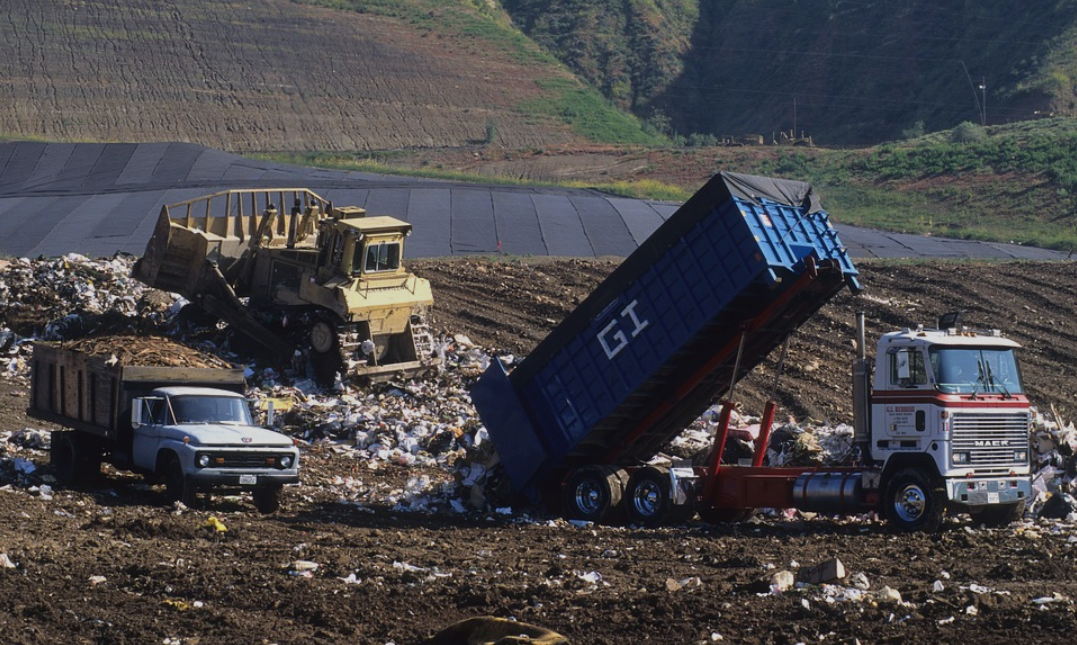Not all garbage trucks and other collection vehicles are going to meet the needs of every company. What works best for a rural residential area is likely a different truck than what is most advantageous for a construction crew in urban America. To have confidence in purchasing the truck that’s best for your workload, it’s important to be able to make an educated decision based on accurate and comprehensive information from reputable and reliable sources. Therefore, this breakdown of four common types of garbage trucks will present key points and practical facts so that you can make the best possible decision for your company’s needs.
Front-Loading Trucks
These commercial waste collectors have forks in front of the cab. The forks, powered by hydraulics, gathers an entire dumpster, lifts it over the truck, and deposit the waste into the open top of the otherwise enclosed bed or body of the truck and finally, the forks set the dumpster back in its place. Because of that enclosed structure, front-loaders are also able to collect liquid waste. A compactor is built into the body for the purpose of crushing the body’s contents for a maximum containment capacity of eight thousand pounds and 40 cubic yards of rubbish.
Rear-Loading Trucks
The most popular type of garbage truck, the rear-loaders are the collection vehicles that run residential routes. Although they are the commonly associated reference to all waste collection trucks, they are unique from all their collection cousins in that the waste is deposited into the body of these trucks by humans rather than by an automated attachment on the truck itself. Rear-loaded trucks are designed for two people at most to ride hanging onto the back of the truck, allowing the speedy acquisition of waste cans and bags in neighborhoods and suburban areas. The truck stops, the individuals hanging on the back hop off and quickly grab the trach at each home, toss it into the truck’s body, then replace that homes trash container and jump back onto the back of the truck, signaling the driver to move along to the next home. These trucks can hold up to 16 tons of waste, which is the equivalent of about 850 homes’ trash.
Roll-Off Trucks
Another type of waste removal truck that collects the rubbish in commercial dumpsters is the roll-off truck. However, where the front-loaders empty the dumpster’s contents into the truck’s body, then return that dumpster to the spot it was lifted from, a roll-off truck loads the whole waste-filled dumpster onto rollers in its bed and hauls it away.
There are two ways that dumpsters can be loaded onto the truck. First is using a cable hook and winch system to pull the dumpster onto the truck’s rollers. Alternatively, smaller roll-off trucks use a hook-lift system. This refers to a 90-degree arm that hooks to a bar on the dumpster and lifts it onto the rollers. Both styles are required to cover the containers they transport unless they’re empty.
Grappling Trucks
Characterized by the mechanism used to gather large, bulky, and cumbersome waste and other items, such as cars going to scrap, these impressive collection vehicles can raise up to 3200 pounds when the arm is fully extended at 20 feet. At ten feet, the hydraulic arm can lift 7100 pounds. Items are “grappled” or grabbed by a contraption attached to the extending arm, much like a massive resemblance to the claw crane arcade game. The clutching device releases its contents into either the container body of the truck, into a separate and stationary container, or into another truck or trailer’s containing unit. Roll-offs are the most versatile among collection vehicles and are useful for companies in many different industries.
As previously stated, knowing what type of truck will be best for the needs of your company’s work is arguably the most critical aspect of making a solid investment in your business. Reliable sources of clear, thorough information can boost your assurance by providing pertinent and relevant facts for your review and consideration. Knowing what options are available helps to ensure that the purchase you decide will be optimal for your business.












